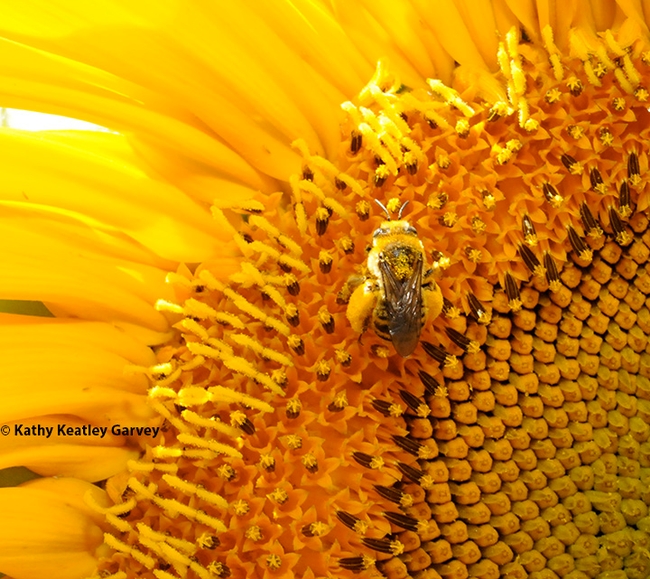Posts Tagged: honey
Eliza Litsey to Discuss a Novel Queen Honey Bee Treatment
If you're curious about honey bees, queens and juvenile hormones, you'll want to attend or hear the UC Davis Department of Entomology and Nematology (ENT) seminar to be presented by apiculturist Eliza Litsey, a former graduate student in the...

Pointing out the queen bee. Apiculturist Eliza Litsey will present her exit seminar, hosted by the UC Davis Department of Entomology and Nematology, at 4:10 p.m., Monday, Nov. 4 in 122 Briggs Hall. (Photo by Kathy Keatley Garvey)
Outstanding PBS Deep Look Video: 'Why Do Sunflowers Face the Sunrise?'
Sunflowers bring out the best in us. They bring us joy, happiness, hope and unity. But wait until you watch the newly released PBS Deep Look video, "Why Do Sunflowers Face the Sunrise?" that spotlights the research of UC Davis and UC Berkeley...

The newly released PBS Deep Look video "Why Do Sunflowers Face the Sunrise?" is a crowd favorite. (Screen shot)

A bee commonly found on sunflowers is Epimelissodes obliqua expurgata, formerly known as Svastra obliqua expurgata. (Photo by Kathy Keatley Garvey)
Learning About the Bees and the Nutrition They Need
If you missed the eagerly anticipated UC Davis Department of Entomology and Nematology seminar by apiculturist Juliana Rangel Posada, an associate professor at Texas A&M and an international leader in honey bee research, not to worry. Her...

A screen shot from the seminar of apiculturist Juliana Rangel Posada of Texas A&M.
Zeroing in on Honey Bees
The next seminar hosted by the UC Davis Department of Entomology and Nematology promises to be of great interest to bee scientists, beekeepers, and all those who want to learn more about honey bees. An international leader in honey bee...

bugsquadblog
The Bee and the Mantis
So here's this praying mantis, a female Mantis religiosa, tucked beneath a Mexican sunflower, Tithonia rotundifola, in a Vacaville garden. She's as still as a stone, and you know how still stones are. Along comes a honey bee,...

A honey bee forages on a Mexican sunflower, Tithonia rotundifola, as a female praying mantis, Mantis religiosa, perches below. (Photo by Kathy Keatley Garvey)

